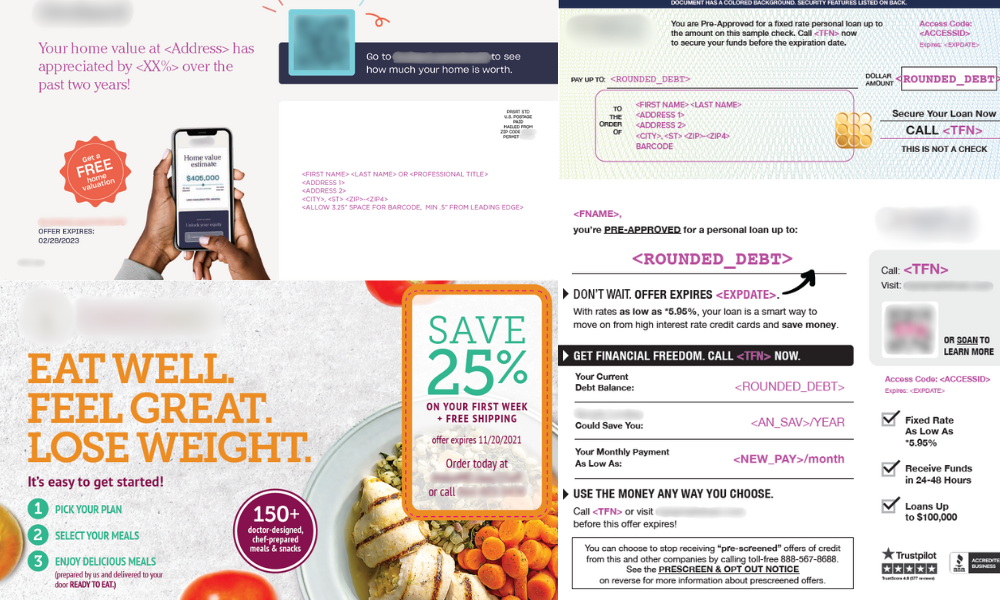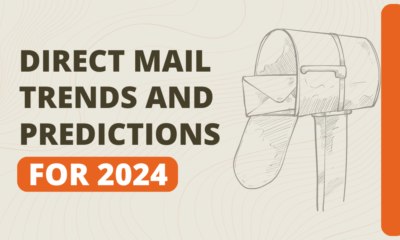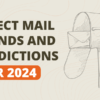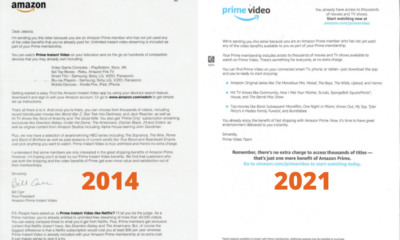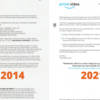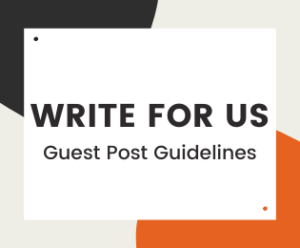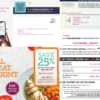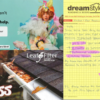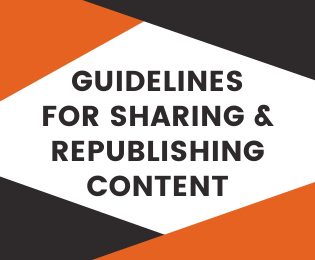RESEARCH & REPORTS
2024 Direct Mail Design Trends
This article will explore which key mail elements leave a lasting impression on the audience, as well as those that can result in a missed opportunity.
As we step into 2024, more marketers are recognizing direct mail as a standout channel for audience connection and customer acquisition. The impact that mail piece design has on customer experience and campaign performance is taking center stage, with industry research finding 83% of direct mail marketers are gearing up to test new creative strategies this year.
A successful test strategy requires an accurate pulse on current design trends and consumer expectations. This article will explore key insights from recent direct mail consumer research on which mail elements leave a lasting impression on the audience and positively impact campaign ROI, as well as those that can result in a missed opportunity.
Why Direct Mail Design Matters
Your copy and design work together to produce a successful direct mail package and will surely impact how the recipient engages with, and responds to, your piece. The creative needs to be engaging enough to encourage them to take the next step of opening and reading your message. And once they do, a clear message and call to action will prompt your audience to take an additional step towards conversion. Your mailing list will help you reach the right audience, but your direct mail design will drive the response.
Top 3 Elements That Give a Positive Impression of Direct Mail
A well-designed mail piece will also create a memorable and personalized experience. Here’s what consumers want to find in their mailbox.
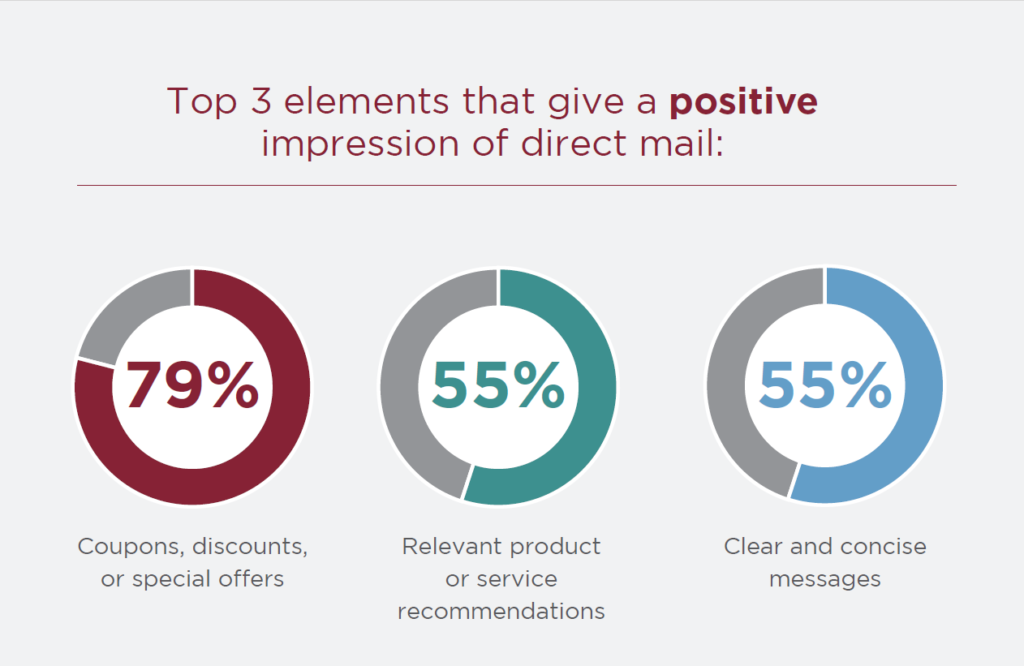 1. Coupons, discounts, or special offers
1. Coupons, discounts, or special offers
The research revealed that incorporating coupons, discounts, or special offers significantly enhances the impact of direct mail. With 56% of consumers expressing a likelihood to use promo codes during checkout, a strong call-to-action (CTA) and online response mechanism (such as QR codes) is crucial to drive immediate action.
2. Relevant product or service recommendations
Personalized marketing is not going away, in fact, it’s expected. Consumers indicated that relevant product or service recommendations are highly valued. Marketers agree that personalization and customization options are the top advantages of direct mail campaigns, as advancements in technology make it easier than ever to personalize beyond the recipient’s name.
3. Clear and concise messages
While the average word count in mail pieces may be up 26%, it’s important to remember consumers are distracted and attention spans are short. Postcards have emerged as a fan favorite among consumers, highlighting the importance of clear messaging and easy-to-follow layouts.
Consumers indicate mail is more enjoyable than paid search, email, streaming, influencer, and text advertisements, and they are less likely to interact with these channels because they feel less personal. Before you start designing your mail piece, it’s important to understand your audience. Use your CRM data to build a mailing list of your best prospects, create offers that feel exclusive, suggest products that are relevant, and develop streamlined messaging to reduce distractions and drive action.
Top 3 Campaign Elements That Leave a Negative Impression of Direct Mail
Understanding what might turn your audience away from your mail piece is just as important as understanding what creates a positive experience for them. Here’s what you should avoid when it comes to direct mail design.
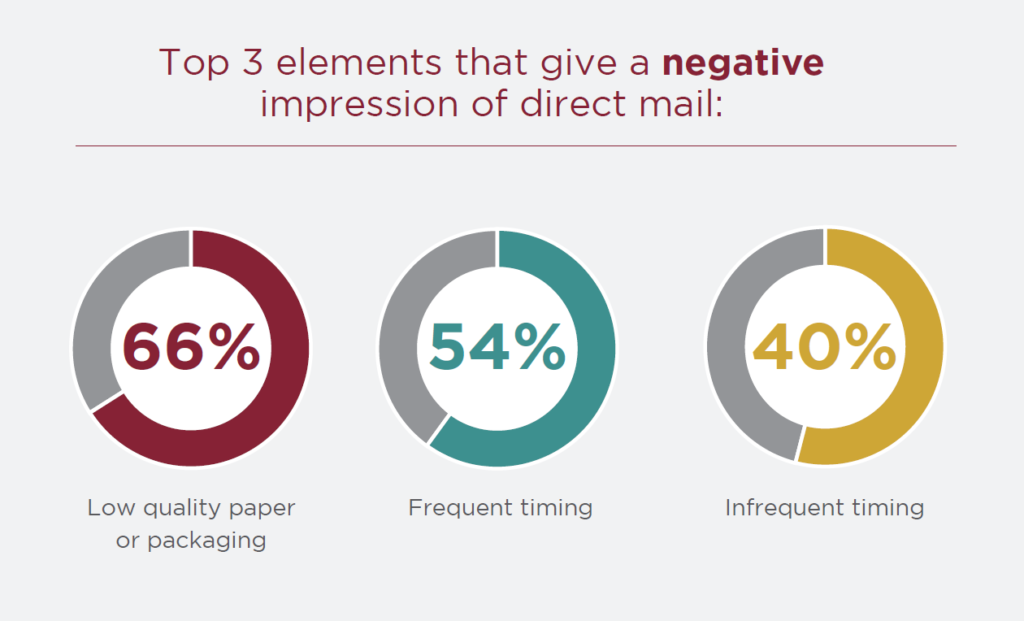
1. Low-quality paper or packaging
The tactile experience of mail is what makes it more impactful than digital advertisements. Your paper stock and finishings influence how your mail is perceived, which impacts your brand image and contributes to the overall success of your campaign. Consider the characteristics of your target audience, brand image, and campaign objectives when selecting a paper to pair with your direct mail design.
2 & 3. Frequent timing & Infrequent timing
Timing is everything. Frequent mailing may feel intrusive or spammy, while infrequent mailings can leave your brand forgotten or overlooked. The frequency of your mailings should align with the relevance of your content. Analyzing Recency, Frequency, and Monetary (RFM) data can help you optimize mail drop timing by considering the recency of customer interactions, the frequency of purchases, and the monetary value of transactions.
Although online direct mail platforms are gaining popularity among marketers, the automation of data, printing, and mailing can leave room for campaign inefficiencies related to these negative impressions. Verify the data available for use in these platforms is permissioned and up to date, ensure paper quality and creative formats align with your brand’s standards, and establish reliable production practices to protect your budget from printing issues, postal delays, and postage waste.
Three Examples of Successful Campaigns
The following mail examples do a great job of capturing the elements that leave consumers with a positive impression of direct mail.

Along with a design that positions the offer center stage, this meal subscription brand uses clear and concise copy to show recipients how easy it is to get started. A well-crafted set of instructions will leave recipients feeling confident in their ability to successfully take advantage of the offer while building a positive perception of the brand.

This real estate brand immediately captures its audience’s attention with relevant products and services. The use of personalized geographic-specific content throughout the mail piece demonstrates a deep understanding of the recipient, creating an increased sense of appreciation for the offer or message. The simplicity of scanning the QR code to obtain the offer encourages immediate action.
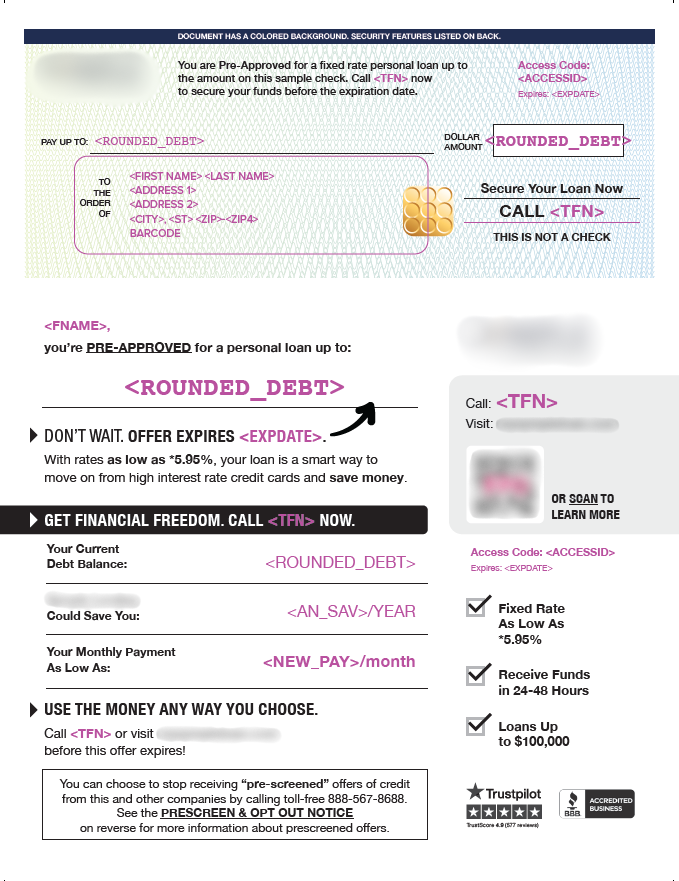
A faux check at the top of this financial brand’s letter acts as a disrupter to traditional direct mail packages and separates this piece from generic messaging. By leveraging individual-specific variable data to create a personalized experience, the mailer signals to the recipient that the brand has taken the time to understand their needs, which also serves to reinforce a brand and offer trust.
Conclusion
With the right creative strategy, your mail can make a lasting impression with your audience. Use the insights and examples shared in this article to make your campaigns even more effective with a direct mail design that stands out, provides a positive customer experience, and drives response. For more direct mail perspectives, download this free e-book: What Consumers Want: The Dos and Don’ts of Direct Mail.
 Written by Tari Johnson
Written by Tari Johnson
Tari Johnson is the Creative Director at SeQuel Response, where she leads the creative team in the development of compelling and high-performing direct mail, digital design and copywriting. With over 15 years of agency and in-house creative experience, Tari has a professional track record of propelling brands forward with data-driven creative strategy.







